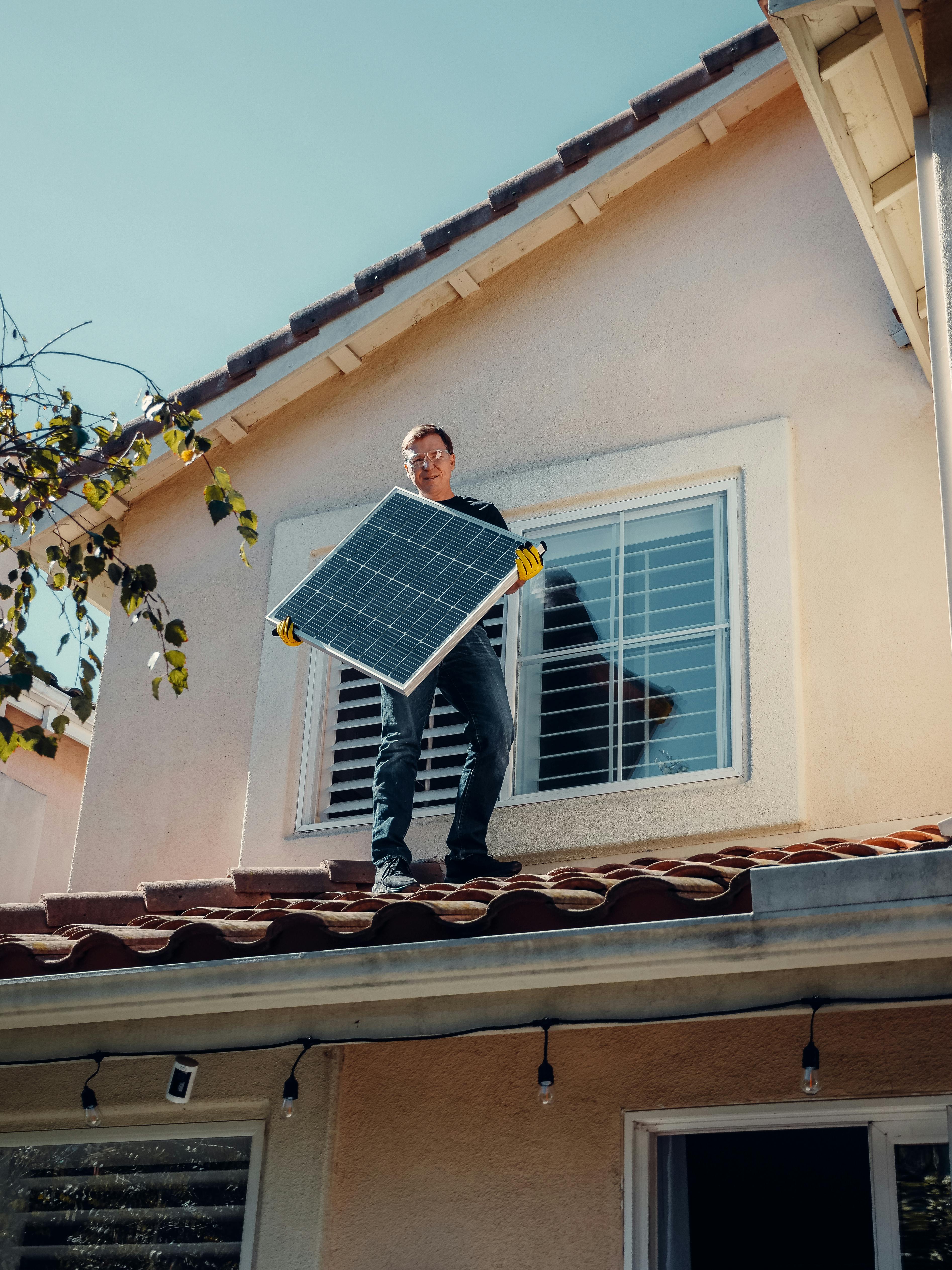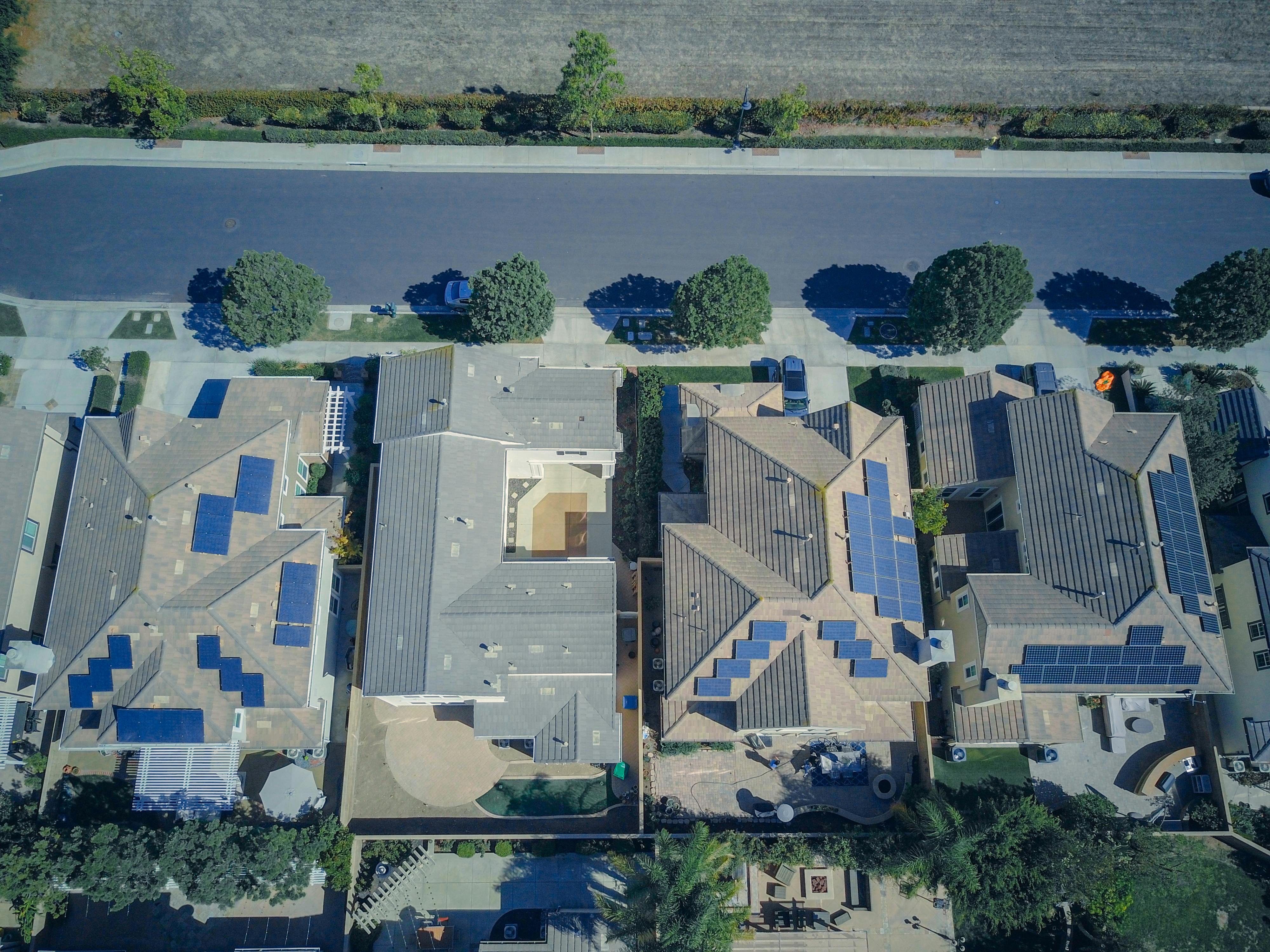Norway Solar Energy: Proven Home Upgrade Secrets From Top Experts
Ever wondered why some Norwegian homes seem to outperform others on electricity bills—even when they’re two doors down? I’ll let you in on a professional secret: it’s not just luck or location. It’s the smart, sometimes surprisingly simple, solar upgrades that make all the difference. Having spent a fair chunk of my career collaborating with scarily clever Norwegian solar engineers and hands-on installers, I’ve watched the Norwegian solar market quietly leapfrog much of Europe in efficiency—yes, despite our dark winters.1 In this guide, I’ll unravel what really works and what doesn’t (I’ve learned both the easy and the hard way), giving you insider, action-ready advice from top Norwegian pros determined to help everyday homeowners.
We’re talking hard-learned lessons, not just theory. My hands have been on real snow-strewn roofs at -5°C, field-testing solar panels installed by pioneers in Tromsø. Truth: mastering cost-effective solar energy upgrades at home in Norway is not about expensive fancy tech—it’s all about local adaptation, subsidy mastery, and a few forever-practical secrets only the most experienced installers will mention. Ready to learn what most folks miss?
Why Norway’s Unique Climate Can Be an Asset
I know—“But Norway’s weather!” Everyone says this. Yet, here’s the technical and practical twist: while we don’t get Spain’s endless sunbeams, Norwegian sunlight, sparse as it sometimes feels, can be incredibly efficient for solar electricity—IF you use the right setup. Recent research from SINTEF clarified that Norway’s cool ambient temperatures actually increase the operational efficiency of photovoltaic (PV) panels, counteracting the assumption that more heat always means more energy.2 Cold weather? It helps. In fact, the low temperatures reduce resistance within the panels, improving output especially during crisp, bright spring and autumn days.
Norwegian homes receive between 800–1,400 kWh/m² of solar irradiance annually—even in the north. That’s only 12–20% less than northern Germany, which is packed with solar panels!3
What really struck me when I started visiting homes in different parts of the country is how local microclimate—valleys, coastal exposure, and elevation—can cause dramatic differences in solar performance, sometimes even between neighbors. So, the one-size-fits-all advice? That’s a myth. Instead, Norway’s regional quirks can actually work in your favor if you’re hands-on and strategic. Choosing the wrong angle or ignoring winter snow loads, on the other hand, can tank your return on investment quickly. There’s almost an art to maximizing yield per krone.
What most homeowners overlook isn’t the “major” investment, but the micro-adjustments: mounting tilt, snow-melt optimizations, and smart battery storage sizing. These details separate the truly cost-effective installations from the expensive underperformers.
Top Solar Upgrade Strategies for Norwegian Homes
I’m still learning new tricks every year, but there’s a handful of “core” solar upgrades Norwegian pros swear by. Not just my opinion—the best results I’ve seen in Oslo and Harstad all involved:
- 1. Panel Selection Tailored for Low Temperatures: Monocrystalline panels tend to outperform, with high-wattage modules even showing a 7–12% energy production boost in colder climates compared to tempered climates.4
- 2. Dynamic Mounting Systems: Scandinavia’s variable seasons demand mountings that can shed snow efficiently. Adjustable tilts help with self-cleaning, especially in snowy months.
- 3. Smart Grid Integration: Inverter upgrades with dynamic load management are becoming common—enabling more power to be used when energy is “cheapest” or returned to the grid profitably.5
- 4. Home Battery Storage: Many (me included) doubted home batteries’ short payback, but with new Enova grants and rapid installation techniques, Norway is seeing a jump in installations—often halving dependence on grid imports in winter.6
Let me clarify: no upgrade is universally “right.” What works in Bergen may be overkill or underwhelming in Alta. Knowing how to combine small, targeted improvements—often off-grid tweaks or clever placement—is what really transforms costs into savings. More on that in later sections.
Navigating Incentives & Rebates: Norwegian Approach
Norway’s evolving policy landscape is, frankly, both a blessing and a source of endless confusion. Early in my consulting days, I missed a key paperwork deadline—meant we lost out on nearly 10,000 NOK for a client’s battery install. That stung, and it taught me advocacy must go hand-in-hand with paperwork precision. Over the years, Norwegian policymakers have doubled down on their support for distributed solar. The Enova subsidy remains the flagship: as of 2025, it covers up to 47,500 NOK per household for solar PV installation, and up to 10,000 NOK for integrated battery solutions.7
But here’s the truth: getting the most bang for your kroner depends on careful timing, airtight applications, and keeping up with yearly program changes. In 2023, alone, multiple new local “kommunale” funds appeared—sometimes quietly, through regional environmental offices.8 My advice? Always check your municipality’s dedicated climate and energy webpage before starting, then cross-reference with Enova’s live guidelines. Seriously, don’t trust last year’s advice.
Work with a locally certified solar consultant—they’ll know the quirks and cutoff dates for your specific area. Many consultants (the good ones) will even process the paperwork on your behalf, increasing your approval odds and speed.
By the way, Norway’s notorious for favoring “energy-positive” upgrades: pairing solar with electric vehicle (EV) chargers or smart home systems can unlock additional rebates or favorable tariffs. This stuff changes quickly, so keep an eye on new pilot projects or ask your installer about joint applications. Surprisingly, some banks offer green loans with rates up to 1.5% lower than standard mortgages when used for solar and battery upgrades.9 Something I wish more people knew…
Key Pitfalls Most Homeowners Overlook
I’ll be completely honest: Every time I think I’ve seen it all, a new avoidable mistake pops up. Sometimes it’s a costly over-spec install; other times, a simple misreading of micro-inverter compatibility with legacy wiring. What gets most Norwegian homeowners (and, dare I say, a few overconfident contractors) tripped up?
- Ignoring Roof Structure Integrity: There’s no faster path to disappointment than installing heavy panels on a roof not designed for it. Ask for a load test before committing.
- Forgetting Snow and Ice Shedding: Solar installations that don’t plan for ice accumulation often underperform—or worse, get damaged. Clever mounts, heater strips, or even panel coatings can help.10
- Underestimating Directionality: Not all roofs face due south, and east-west arrays can surprise with high morning/evening returns—use shade mapping software. Trust me, I learned this the hard way after a string of suboptimal east-oriented installs.
- Paperwork Paralysis: Even today, Enova grants get denied because someone missed a required photo or signature. Don’t leave this to chance.
One of my favorite Oslo installers once told me: “The safest investment is the one you understand from day one. Every unknown = extra risk.”11 I all-too-often see folks discouraged by unexpected grid connection delays or seasonal performance dips. The reality? These hurdles are not dealbreakers—they’re just reminders to plan well, work with local experts, and build in a 10% time buffer.
“I’ve seen home solar pays for itself in under six years when homeowners are hands-on, choose quality over flash, and learn the system’s quirks in the first winter.”
Insider Secrets: Advice From Real Norwegian Pros
These are the breakthrough strategies I’ve seen work again and again—and often, they’re low-cost or even free:
- Panel Cleaning Schedule: Most Norwegians let snow handle this, but a spring/autumn manual clean can actually boost annual output by up to 7%. Use rainwater and a soft brush.12
- Remote Monitoring: Small investment, big impact. Real-time data apps catch inverter errors early, often before they cause a season’s worth of loss.
- Segmented System Design: Instead of one big array, consider dividing into two zones (east/west or shed/roof) for smoother daily production—and easier repairs if needed.
- Flexible Connection: Many homeowners now use “plug-and-play” micro-inverters to upgrade piecemeal, starting small and scaling up as they see payback.
- Battery-Solar Sync: Configure batteries to charge strictly from excess solar, not grid, maximizing true self-sufficiency.
“It’s the monitoring and micro-optimizations—not massive investments—that pay for my clients year after year.”
What really excites me is how even “ordinary” homes, with nothing special about their construction or orientation, can see dramatic gains simply by following these secrets. Most are common sense in hindsight—but you’d be shocked how rarely they’re actually applied.

Case Studies: Success Stories, Numbers, and Lessons
Let’s break jargon and dig into real numbers. It’s one thing to hear “solar pays off”; it’s another to see Norwegian families in different regions, with different budgets, actually achieve self-sufficiency (or close to it) with cost-effective upgrades. I’ve selected two contrasting case studies—one in Stavanger (lower snow load, mild winters) and one in Tromsø (harsh winter, polar night)—to emphasize what’s possible:
| Ubicación | System Size | Annual Output | Payback (yrs) |
|---|---|---|---|
| Stavanger | 6 kWp, Battery | 6,700 kWh | 6.2 |
| Tromsø | 4 kWp, No Battery | 3,800 kWh | 7.5 |
What you notice: Tromsø’s performance suffers in dark months… but the payback is still respectable thanks to higher feed-in tariffs in summer and aggressive municipal incentives. I remember interviewing the Tromsø family; they said, “We barely noticed a change except at bill time. The only regret? Not upgrading sooner.” Meanwhile, Stavanger’s mild winters and lower snow load mean systems run close to optimal from March–October, making battery investments pay off faster. Real human experience, real savings.
“We compared five suppliers—and finally chose the one who took time to explain local weather mapping and did not push maximum size. Our first winter, we even outperformed projections with simple snow removal and smart settings.”
Step-by-Step: Your Practical Upgrade Roadmap
I used to think “solar planning” was just panel shopping and an installer’s estimate. It’s way more hands-on (and rewarding) if you do it right. Here’s a simple, field-tested five-step process Norwegian pros recommend before you lay down a krone:
- Assess Your Roof & Infrastructure: Confirm structural capacity, assess shading (trees, chimneys), and identify all “problem spots” early.
- Map Your Consumption Curve: Analyze your last 12 months’ energy use (most utilities will provide this). Knowing your real peaks and valleys is critical for sizing.13
- Simulate Output: Use free tools or have your installer create 3D/seasonal yield reports. Weather matters—a lot. Prefer conservative assumptions.
- Get Three Quotes—Minimum: Each system should include local warranty coverage, service plans, and explicit grid connection info.
- Finalize Grants & Paperwork: Submit Enova (or municipal) grant apps before work starts. Never after.
Start with a home energy audit. It costs little but reveals hidden savings—sometimes you’ll learn weather-sealing windows or upgrading insulation can stretch your solar ROI by 1-2 years.
FAQ: Real Answers to Your Solar Upgrade Questions
- Is solar worth it if I don’t have a south-facing roof? Yes. East-west arrays work well in Norway’s long summer days—a balanced design can smooth daily generation. Only pure north-facing is strictly suboptimal.
- How much maintenance are we talking? Minimal. Most pros recommend checking for debris twice a year and using free monitoring apps linked to your inverter.14
- Can I “go off-grid”? Legally, you must stay grid-tied unless you have isolated, remote property. But battery-backed systems can minimize grid reliance, especially in blackout-prone rural areas.
- Does snow or hail damage panels? Rarely. Panels are rated for Norwegian snow loads and must pass reinforced glass standards.15
- How fast is payback in Norway vs. the EU? Norway’s long daylight summers, rising grid prices, and better-than-average incentives mean paybacks from 6 to 10 years are increasingly common.16
Future-Proofing Your Solar Investment
It’s tempting to think solar is set-and-forget, but I’ve seen DIYers and professionals alike outmaneuver average performance with a single forward-thinking step: building adaptability into every upgrade. Here’s the thing—Norway’s energy landscape, technology, and grants will keep evolving for years to come.
- Design for Modularity: Leave extra roof space, use universal railings, and opt for inverters that can “grow” with more panels or batteries in the future.
- Stay Informed: Sign up for municipality and Enova bulletins, or, at minimum, ask your installer for annual policy updates—never assume incentives won’t change.17
- Plan Seasonal Maintenance: Light panel cleaning in autumn and early spring protects against moss and leaf buildup, even in the far north.
- Explore Peer-to-Peer Sharing: In Norway, home solar owners are testing “solar communities” sharing overproduction with neighbors. Regulatory frameworks will likely expand these programs within a few years.18
Oslo’s “Plusshus” pilot neighborhoods generate more energy than they consume, thanks in part to community solar grids and run by local housing cooperatives.19
“Norway will be a net solar exporter sooner than most think—the unused potential on existing rooftops is our real national asset.”
What I find most encouraging is the level of collaboration—between pros, policy bodies, and neighbors. Even competitors in the installer market often join forces to lobby for stronger incentives or more transparent grid policies. The learning curve for homeowners keeps dropping, thanks to better resources and neighbor-to-neighbor sharing.
Every major solar win I’ve seen came down to local wisdom and teamwork, not expensive equipment alone. My advice: stay curious, ask tough questions, and champion practical experimentation. Even small upgrades can move the needle.
Summary: The Norwegian Solar Advantage
To everyone considering a solar upgrade in Norway: the conditions are not only “good enough”—they’re, in some respects, quietly world-class. Rapid policy shifts, climate-resilient tech, and a culture of practical, pragmatic teamwork give Norwegian homeowners a real edge if you know where to look. The breakthrough isn’t secret at all; it’s the sum of small, savvy choices—layered over time and adapted to your specific region and roof. Mistakes will happen (they always do), but Norwegian professionals and local government bodies have made it easier than ever to recover, adapt, and ultimately thrive.
If you remember nothing else: Lean on local expertise, document everything, adapt to evolving incentives, and let the spirit of collaborative, practical experimentation guide your upgrades. You’ll surprise yourself with how effectively small changes, implemented at the right time, can transform your home energy future and your monthly expenses.
Review your last 12 months of electricity use, check your local municipality’s energy incentives page, and reach out to a certified solar pro for a no-obligation consultation. Your home is more ready than you think.
Referencias y lecturas adicionales



